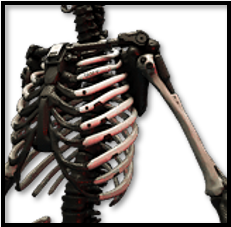Inland Empire
Fire When Ready

- Intent: To introduce a new suite of cybernetics, created through Sith science.
- Image Source: Cyberpunk 2077 - Synaptic Signal Optimizer (hosted on Gamesatlas)
- Canon Link:
- Permissions: N/A
- Primary Source: N/A
- Manufacturer: Sictis Order
- Affiliation: Sictis Order
- Market Status: Closed-Market
- Model: Adekon Nanogene
- Modularity: N/A
- Production: Minor
- Material: Electronic Components, Bio-Synthetic Components, Madilon, Molytex, etc.
- Classification: Full Suite
- Size: Large
- Weight: Average
- Resistances:
- Energy: Very High
- Physical: Very High
- Kinetic: Very High
- Ion/EMP: Low
- Lightsabers: None
- Increased strength, resilience, and durability
- Increased resistance to diseases and other forms of sickness
- Increased life expectancy
- Improved nutrient absorption and metabolism
- Improved filtration and nullification of poisons and toxins
- Improved reflexes, reaction time, and information processing
- Improved perception and sensory awareness
- Enables remote interfacing with computer systems and compatible electronics
- Augmented HUD with full-spectrum visual suite; integrated scanners
- Automated self-repair and maintenance
- Local data storage
[ + ] The Adekon Nanogene conferred on its hosts all the benefits one would typically obtain from a series of high-end cybernetic implants. It was comparatively easy to administer, and roundly superior to almost all other commercial alternatives.
[ + ] It also made the host subject resistant to conventional forms of attack. Between general health benefits and increased durability, most of the Nanogene's hosts considered death of any kind a remote possibility.
[ - ] As with most extensive cybernetic surgeries, hosts of the Type 2 Adekon Nanogene had their ability to wield the Force severely dampened, if not lost entirely.
[ - ] Despite not being outwardly visible, the cybernetics installed by the Adekon Nanogene were easily detectable by cursory scans. Anyone making a token effort to identify cyborgs would always find someone carrying the Nanogene.
[ - ] Once the Adekon Nanogene finished restructuring a host, there was no way to reverse it. The results, for better or worse, were permanent.
[ - ] Any host with natural shapeshifting or regenerative abilities would lose them after the completion of restructuring.
[ - ] Sensitivity to Ion and EMP attacks was a known side effect of the Adekon Nanogene. While they would not summarily deactivate the Nanogene's implants or systems, they would induce nausea, dizziness, and a host of other temporary maladies. The severity of these effects corresponded to the intensity of the attack.
DESCRIPTION
The Adekon Nanogene was a suite of cybernetic enhancements designed by Darth Adekos. It functioned similarly to the original nanogene developed by Belia Darzu - but instead of turning hosts into mindless technobeasts, the Adekon Nanogene converted its them into advanced cyborgs. The Type 2 was a more widespread adaptation created by the Sictis Order, primarily for the purpose of outfitting their Nanogene Troopers.
Upon being injected into an organic host, the Adekon Nanogene would convert various organic systems into synthetic ones. Organs and tissue that could not be completely converted were instead supplemented with synthetic structures.
The nanogene droids were able to custom-tailor their modifications to any host, and so the vast majority of organic species could benefit from the Adekon Nanogene. If the subject already possessed cybernetics, they would be upgraded and integrated into the suite provided by the Adekon Nanogene.
Restructured subjects would be left with a suite of highly advanced cybernetics directly integrated into them. The benefits ran the gamut from expected (greatly increased durability, stamina, senses, and strength), advanced (direct technological interfacing, integrated scanners, and HUD), to mundane (self-cleaning teeth, excess cholesterol removal, configurable sleep patterns).
Certain species lost their natural abilities, such as shapeshifting or heightened regeneration, after restructuring.
Nanogene droids remained present within the host even after restructuring, carrying out maintenance and repair of the new synthetic structures and components. They were capable of replicating within the host as necessary.
The process of restructuring itself as time-consuming and often required special accommodations. Medium humanoids would take up to one week to be converted, with larger humanoids taking up to four. Subjects would often be placed into a medically induced coma and stored within a bacta tank until restructuring was completed. Otherwise, restructuring would be incredibly painful – to the point of potentially causing lasting psychological trauma.
All variants of the Adekon Nanogene were detectable even by cursory scans. Hosts also displayed increased vulnerability to ion weapons and electromagnetic pulses. These would cause anything from general malaise to complete incapacitation, depending on the intensity of the attack.
Unlike its predecessor, the Type 2 Nanogene made no special effort to preserve Midichlorians. Hosts displayed decreased sensitivity to the Force and lowered Midichlorian counts. Those who wielded the Force with distinct proficiency were unable to do so after restructuring.
Production and administration of the Type 2 Nanogene was strictly controlled by the Sictis Order. Samples of the Type 2 Nanogene appeared on the black market infrequently.
Last edited:













